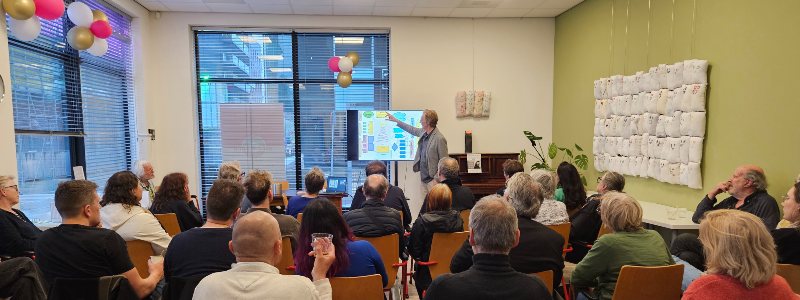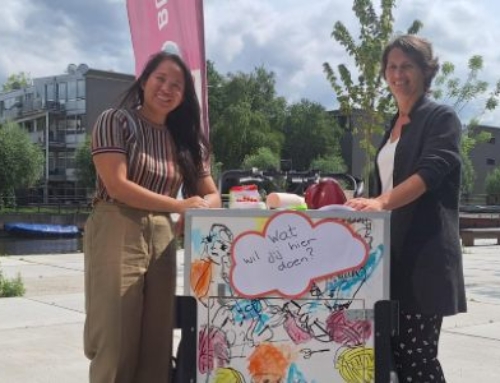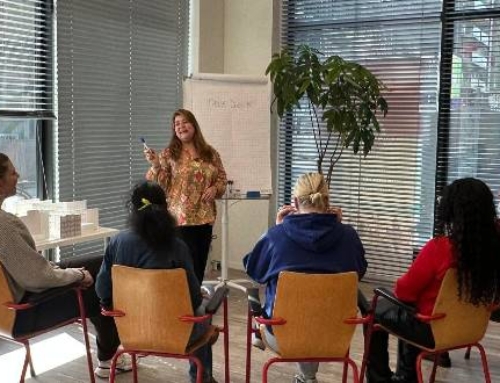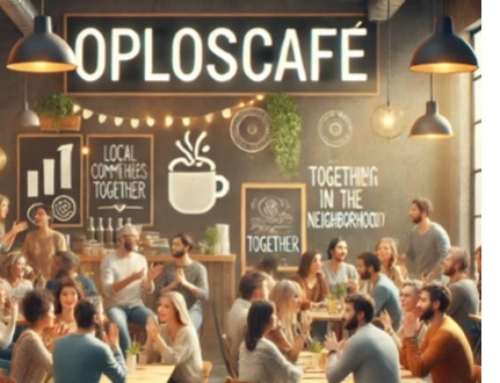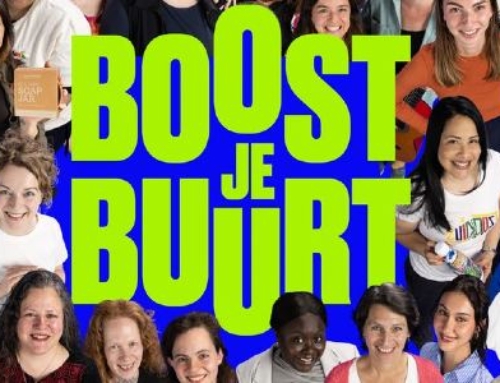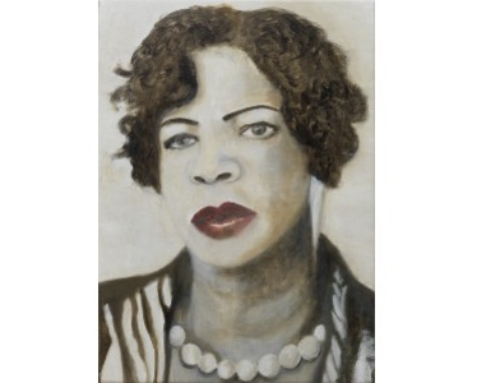THE HALLEN 1: IN CONVERSATION WITH ARCHITECT ANDRÉ VAN STIGT
THE HALLEN 1: IN CONVERSATION WITH ARCHITECT ANDRÉ VAN STIGT
A look back at the talk show on the reuse of monumental heritage
April 24, 2025 — Buurtkamer Over de Brug, Amsterdam
When a monumental building in the Netherlands is given a second life, there’s a good chance the name André van Stigt is involved. As a restoration architect and entrepreneur, he has spent decades rescuing buildings at risk of decay or demolition — from the massive Entrepotdok to the iconic Panopticon prison in Haarlem.
Van Stigt starts by listening to the building, then connects with the neighborhood, and finally takes on financial risk by stepping into the operation himself.
With his unique blend of heritage passion, co-creation, and a creative financing model, he has not only transformed hundreds of warehouses into affordable housing, but also turned a 19th-century tram depot into a vibrant cultural hub and a panopticon prison into a modern university campus. His approach — “function follows form, but also society” — has earned international awards and is seen within the field as a textbook example of sustainable redevelopment.
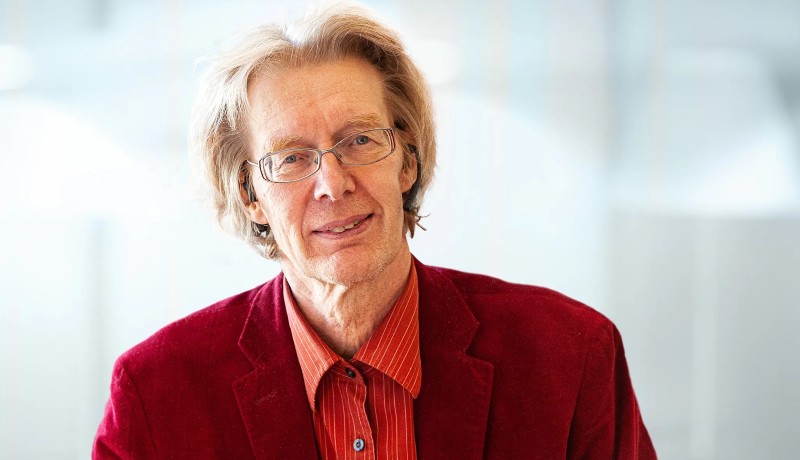
André van Stigt
On Thursday evening, April 24, Van Stigt was the featured guest in the first episode of the new talk show series De Hallen, held at the Buurtkamer Over de Brug. He spoke about his experiences with restoring, repurposing, and operating industrial heritage sites.
Well-known projects he has been involved in include De Hallen in Amsterdam-West, the Koepelgevangenis in Haarlem, the Gashouder at the Westergas site, Pakhuis de Zwijger, the Olympic Stadium, and of course, the Entrepotdok.
From Vacancy to Living Heritage
The reason for the series is the temporary vacancy of the Werkspoorhal. To explore future possibilities for the space, successful examples of reuse were highlighted.
Van Stigt shared insights from his own work and stressed that successful repurposing goes beyond physical restoration. He emphasized the importance of collaboration, vision, and moving away from reliance on subsidies.
“As soon as the monuments were restored, parties were willing to join,” the architect said.

The Power of Citizen Initiatives
A key theme of the evening was the role of residents and social engagement. In the redevelopment of the Koepel in Haarlem, citizen resistance played a crucial role. A foundation was formed to preserve the building for the city. The result: a vibrant space where education, culture, and entrepreneurship come together.
At De Hallen in Amsterdam, the project showed how complicated things can get when too many people are involved. At first, 18 civil servants were part of the process. That led to delays and unclear decision-making. Once the team was reduced to just two people, things suddenly moved quickly.
According to Van Stigt, smaller teams are often more effective—if the right people are in the right roles and the lines for collaboration and decision-making are clear.
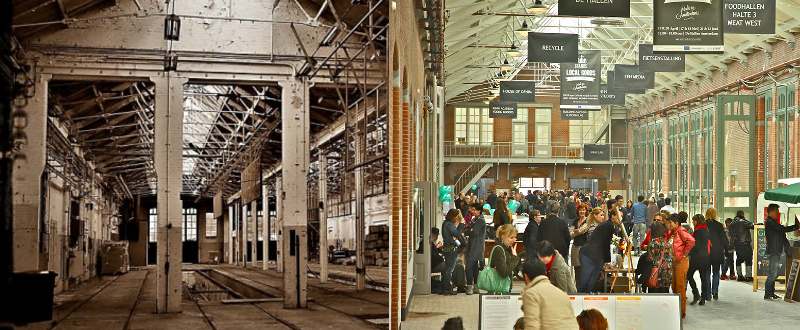
A Clear Example of Changing Perspectives
Another striking example Van Stigt mentioned was the initial resistance from the market vendors around De Hallen. They strongly opposed the plans, fearing competition and loss of market space.
But now that the project has become a major success and De Hallen draws large crowds, the nearby Ten Katemarkt also benefits from the increased activity.
This shows that resistance often comes from uncertainty. A well-executed redevelopment can eventually bring advantages even to those who opposed it at first.
That’s why it’s crucial to clearly communicate the project’s purpose and potential benefits from the start—and to involve as many people as possible in the process.
Sustainability in a Broad Sense
Sustainability was discussed in both technical and social terms.
Examples like the Entrepotdok, Pakhuis de Zwijger, and the Gashouder show how low overhead costs, solar panels, heat pumps, and smart operations can support long-term usability.
The Gashouder at the Westergas site is currently undergoing a sustainability upgrade. With the installation of heat pumps and solar panels, the goal is to move toward an energy-neutral future.
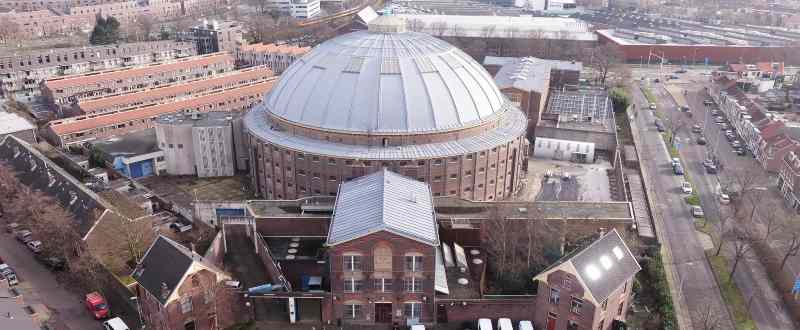
Sustainability as Both Technical and Economic Value
This move toward sustainability isn’t just technically important—it also matters economically.
Low energy costs help keep the site attractive as a creative hub by keeping rents affordable. That supports long-term use by artists and cultural initiatives.
At the same time, new challenges emerge. For instance, feeding energy back into the grid now leads to extra charges, which puts pressure on the financial model.
Together with the city alderman, a creative solution was found. This made it possible to move forward with the plan without incurring extra costs for returning energy to the grid.
Van Stigt pointed out that this shows how complex such projects can be. They need committed partners who don’t just think inside the box, but are willing to explore practical, innovative paths together.
A Critical Look at the Werkspoorhal
The current approach to the Werkspoorhal was openly criticized.
According to Van Stigt, the city moved too quickly toward commercial partners and missed chances for community-driven use. He stressed the importance of early participation:
“Make sure you involve residents from the start,” he warned.
He pointed to the Amsterdam Museum as a cautionary tale. Due to neighborhood objections, that project faced a three-year delay and millions in losses.
Those setbacks had real consequences. The museum was forced to make deep cuts. The result: a scaled-down program and less room for education and public events.
That decision didn’t just affect the museum. It also hurt local residents, as both cultural offerings and accessibility came under pressure.
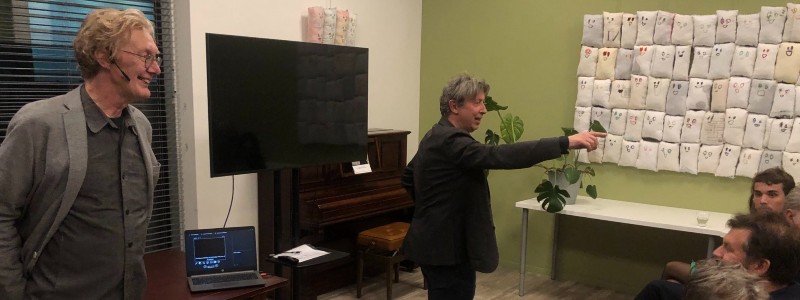
What Does It Take to Succeed?
At the end of the evening, Van Stigt was asked a direct question:
What does it take to make a project like this succeed?
His answer was clear:
You need a deep understanding of what residents need—right from the start.
Next, you build a coalition. One that includes residents, initiators, and officials who understand the system and are willing to work together.
“It often goes wrong in bureaucracy and costs,” Van Stigt said.
Financial Feasibility Demands Creativity
Making a project financially viable takes creative thinking.
Commercial elements—like a café or hotel—can help support public or social functions. They generate income that keeps the rest of the project going.
But above all, Van Stigt said, you need persistence.
“You also need a few crazy people willing to drag a dead horse,” he said.
Tot slot werd nog een mogelijke koppeling geschetst met de Jan van Gent-hallen, een privaat project dat bij voldoende balans mogelijk kan bijdragen aan de herontwikkeling van de Werkspoorhal, bijvoorbeeld via gedeelde energievoorzieningen of functies.
De Hallen 1 vormde de aftrap van een reeks gesprekken over de toekomst van monumentaal erfgoed. Vervolgavonden worden binnenkort aangekondigd.

